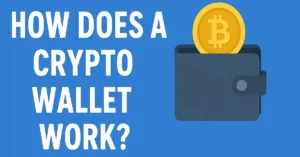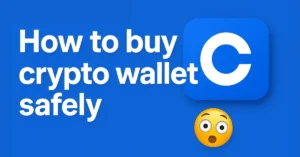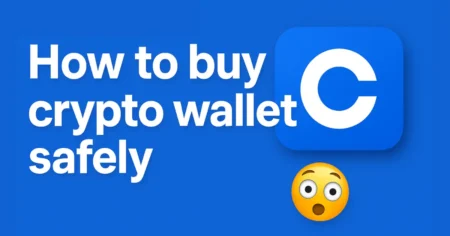Best crypto exchange in USA
Introduction to Crypto Exchanges in the United States
What Are Crypto Exchanges?
Crypto exchanges are the foundation of the digital currency ecosystem. Think of them as digital marketplaces where you can buy, sell, and trade cryptocurrencies like Bitcoin, Ethereum, and thousands of altcoins. Much like a stock market platform lets you trade shares, a crypto exchange provides the same functionality for digital assets. You create an account, deposit funds—either fiat (like USD) or another crypto—and you can start trading.
There are two major types of exchanges: centralized (CEX) and decentralized (DEX). Centralized exchanges act as intermediaries, offering high liquidity, fast transactions, and customer support. Decentralized exchanges, on the other hand, run on blockchain technology and offer peer-to-peer trading. However, most users in the US prefer centralized platforms due to their regulatory compliance, ease of use, and added security features.
If you’re just stepping into the crypto space, navigating these platforms might feel overwhelming. But choosing the right exchange in the US is not just about convenience—it’s about legality, safety, and access to features tailored to your trading needs.
How Crypto Exchanges Work in the US Market
In the United States, crypto exchanges operate under strict regulatory oversight. Each platform must register with FinCEN (Financial Crimes Enforcement Network) as a money services business. This ensures compliance with anti-money laundering (AML) laws and Know Your Customer (KYC) verification processes. As a user, you’ll likely be asked to upload identity documents and sometimes even proof of address to get started.
Once you’re verified, you can link a bank account or credit card to fund your exchange account. Trading pairs like BTC/USD or ETH/USDT allow you to buy or sell crypto against fiat currencies or stablecoins. US-based exchanges also integrate robust security tools such as two-factor authentication (2FA), cold storage wallets, and even insurance against hacking incidents.
These platforms are engineered not just for individual users but also for institutional investors. Most offer APIs for trading bots, support for recurring buys, and detailed reporting for tax filing. The goal is to make cryptocurrency as accessible and secure as traditional financial instruments.
Why Choosing the Right Crypto Exchange Matters
Impact on Investment Security
When it comes to investing in cryptocurrencies, security is non-negotiable. The industry has seen its fair share of major hacks, rug pulls, and exit scams. Mt. Gox, Bitfinex, and more recently, FTX, are stark reminders of what can go wrong when you trust the wrong platform.
That’s why picking a reputable exchange is the first step in protecting your digital assets. US-based exchanges often store the majority of user funds in cold wallets (offline storage), drastically reducing the risk of hacks. Some platforms even carry crime insurance policies to reimburse users in the event of a breach.
Security isn’t just about keeping hackers out; it’s about building trust. Transparent operations, regular audits, proof-of-reserves disclosures, and real-time monitoring make all the difference. And with federal oversight increasing in the crypto space, exchanges operating legally in the US are more likely to follow best practices in security and customer protection.
Importance of Regulatory Compliance
You wouldn’t put your money in a bank that wasn’t FDIC-insured, right? The same logic applies to crypto exchanges. Regulatory compliance is the legal backbone of any trustworthy platform. In the United States, compliance ensures that the exchange adheres to federal and state laws, protecting users from financial crimes.
Every credible crypto exchange in the US must follow KYC and AML rules, meaning they must verify every customer’s identity and track transactions that seem suspicious. While this may feel intrusive to some, it’s essential for keeping the ecosystem clean and safe.
Moreover, compliant exchanges are more likely to offer protection against fraud and loss, and they are better positioned to assist users in the case of account compromise or transaction disputes. When you pick an exchange that takes regulation seriously, you’re not just securing your funds—you’re backing a system that’s accountable and future-ready.
Key Features to Look for in a US-Based Crypto Exchange
Licensing and Regulation in the US
One of the first things to check when evaluating a crypto exchange is whether it’s licensed to operate in your state. The US doesn’t have a single federal license for crypto exchanges; instead, platforms must comply with individual state regulations and obtain money transmitter licenses (MTLs) where required.
Look for exchanges that are registered with FinCEN and have a transparent legal team. If an exchange is vague about where it’s located or who runs it, that’s a red flag. Reputable platforms like Coinbase, Gemini, and Kraken are fully licensed and often publicly share their regulatory compliance measures.
Operating under a licensed framework also means the exchange can assist law enforcement if needed, freeze suspicious accounts, and offer better customer protection. In a world where anonymity is a double-edged sword, licensed exchanges offer a layer of credibility that can’t be ignored.
Security Protocols and Measures
Security features are a make-or-break factor for any crypto platform. If an exchange doesn’t offer basics like two-factor authentication (2FA), biometric logins, and withdrawal whitelist settings, walk away.
Leading US exchanges use advanced security protocols such as:
- End-to-end data encryption
- Multi-sig cold storage
- Real-time fraud detection algorithms
- Regular security audits
You should also check whether the exchange offers crime insurance and what it covers. Remember, even the best technology can’t replace common sense—always use a unique password, store your private keys safely, and avoid accessing exchanges over public Wi-Fi.
User Interface and Mobile App Experience
Whether you’re a casual buyer or an active trader, a well-designed interface makes your crypto journey smoother. Most of the top exchanges in the US have intuitive web platforms and mobile apps with features like:
- Real-time price tracking
- One-click trading
- Customizable dashboards
- Educational resources
For example, Coinbase is famous for its beginner-friendly UI, while Kraken Pro offers a more advanced dashboard for experienced users. A good mobile app can mean the difference between catching a price dip or missing it.
Supported Coins and Trading Pairs
One of the biggest reasons people jump from one exchange to another is the lack of supported cryptocurrencies. When choosing a crypto exchange in the USA, look closely at the list of supported coins and trading pairs. Some exchanges offer only a handful of assets like Bitcoin (BTC), Ethereum (ETH), and a few altcoins, while others provide access to hundreds—even thousands—of tokens, including lesser-known but high-potential projects.
Trading pairs matter just as much. For instance, if you want to trade Ethereum against USD (ETH/USD) or a stablecoin like USDT (ETH/USDT), make sure the exchange supports those pairs. Many US-based platforms also offer pairs like BTC/EUR, ETH/GBP, or even direct crypto-to-crypto pairs like ETH/SOL.
The more trading pairs available, the more flexibility you have to diversify your portfolio or execute more advanced trading strategies like arbitrage or swing trading. Also, keep an eye out for new coin listings—some exchanges are quicker than others to support trending tokens, giving you early access to promising opportunities.
Top 5 Best Crypto Exchanges in the USA (2025 Updated List)
Coinbase – The Most User-Friendly
If you’ve spent any time researching crypto in the USA, you’ve probably heard of Coinbase. Founded in 2012 and headquartered in San Francisco, it’s one of the most trusted and regulated platforms in the world. For beginners, Coinbase offers an incredibly simple user experience. You can sign up, verify your identity, link a bank account, and start trading—all within 15 minutes.
What really sets Coinbase apart is its focus on security and education. They offer FDIC insurance on USD balances, hold most crypto in cold storage, and provide robust customer support. Plus, their “Earn” feature lets users collect free crypto by watching educational videos.
However, Coinbase isn’t perfect. Its trading fees are higher than many competitors, especially for small transactions. Still, for users who prioritize ease of use and trustworthiness, Coinbase remains a top contender.
Kraken – The Best for Security
Kraken is one of the oldest cryptocurrency exchanges still in operation, known for its iron-clad security. Founded in 2011, it has never suffered a major hack—a feat that speaks volumes in an industry fraught with security issues.
Kraken is fully compliant with US regulations and operates under strict security policies. They offer a comprehensive suite of features for both beginners and pros, including margin trading, staking, and futures contracts. Its user interface is more technical compared to Coinbase, but once you get the hang of it, Kraken offers unmatched control and insights.
The platform also stands out for its customer service. Kraken has a 24/7 live chat support team that actually solves problems—something not every exchange can say. If security and reliability are at the top of your checklist, Kraken is an excellent choice.
Gemini – Great for Institutional Investors
Gemini, founded by the Winklevoss twins in 2014, is another fully licensed US-based crypto exchange known for its institutional-grade security and transparent operations. The platform caters to both retail and institutional investors, offering features like recurring buys, interest-earning accounts, and even a crypto credit card.
Gemini’s interface is clean and user-friendly, and the mobile app is as polished as any top fintech platform. For institutions and high-net-worth individuals, Gemini offers custody solutions, advanced trading tools, and APIs for automated strategies.
One unique aspect is Gemini’s emphasis on regulation and trust. It was the first crypto exchange to complete SOC 1 Type 2 and SOC 2 Type 2 exams—important certifications in the financial world. If you’re looking for a platform that combines regulatory trust with professional-grade tools, Gemini delivers.
Crypto.com – Wide Range of Assets
Crypto.com has quickly risen in popularity thanks to aggressive marketing, a robust mobile app, and a wide range of supported assets. Based in Singapore but fully compliant in the US, it offers a complete ecosystem that includes trading, staking, DeFi wallets, an NFT marketplace, and even a Visa crypto card that lets you spend your crypto in the real world.
The mobile app is sleek and packed with features. You can set price alerts, perform one-click trades, and track your portfolio with visual graphs. Crypto.com also rewards users for staking its native token, CRO, with better rates and reduced fees.
It’s a great choice if you’re looking for a one-stop-shop for all your crypto needs. However, their customer service and transparency about fees have room for improvement, so always read the fine print.
Binance US – Advanced Features at Low Fees
Binance US is the American arm of the global exchange giant Binance. Although it operates separately to meet US regulations, it still packs a punch. Known for ultra-low trading fees and advanced features, Binance US appeals to experienced traders.
You’ll find over 150 cryptocurrencies and a deep range of trading pairs. The platform supports spot trading, real-time charting tools via TradingView, and recurring buys. Its advanced dashboard includes custom order types, making it ideal for traders who like to tinker with their strategies.
On the downside, Binance US has faced regulatory hurdles in certain states and doesn’t offer services everywhere in the country. Be sure to check if it’s supported in your region before signing up.
Comparison Table of Top US Crypto Exchanges
Fee Structures
| Exchange | Maker Fee | Taker Fee | Hidden Fees |
|---|---|---|---|
| Coinbase | 0.40% | 0.60% | High spreads |
| Kraken | 0.16% | 0.26% | No |
| Gemini | 0.25% | 0.35% | Convenience fees |
| Crypto.com | 0.075% | 0.075% | Withdrawal fees |
| Binance US | 0.10% | 0.10% | Lowest in market |
Available Cryptos
| Exchange | # of Cryptos |
|---|---|
| Coinbase | 250+ |
| Kraken | 200+ |
| Gemini | 100+ |
| Crypto.com | 300+ |
| Binance US | 150+ |
Payment Methods
| Exchange | Bank Transfer | Debit/Credit | PayPal | Wire Transfer |
|---|---|---|---|---|
| Coinbase | ✅ | ✅ | ✅ | ✅ |
| Kraken | ✅ | ❌ | ❌ | ✅ |
| Gemini | ✅ | ✅ | ❌ | ✅ |
| Crypto.com | ✅ | ✅ | ❌ | ❌ |
| Binance US | ✅ | ✅ | ❌ | ✅ |
KYC/Verification Time
| Exchange | Avg. KYC Time |
|---|---|
| Coinbase | 5–15 minutes |
| Kraken | 15–30 minutes |
| Gemini | 10–20 minutes |
| Crypto.com | 5–10 minutes |
| Binance US | 10–30 minutes |
Mobile App Ratings
| Exchange | iOS | Android |
|---|---|---|
| Coinbase | 4.7 | 4.3 |
| Kraken | 4.5 | 4.1 |
| Gemini | 4.6 | 4.2 |
| Crypto.com | 4.8 | 4.5 |
| Binance US | 4.4 | 4.2 |
How to Choose the Right Exchange for You
Beginner vs. Advanced Trader Needs
Choosing the best crypto exchange really comes down to your experience level and trading goals. Are you just starting out, or do you already have a few trades under your belt? Beginners typically look for an intuitive interface, low fees for small trades, and lots of educational content. Platforms like Coinbase or Gemini offer a straightforward experience with built-in tutorials and even quizzes that reward you with free crypto.
On the other hand, advanced traders need more robust tools—think charting systems, custom order types, and lower fees for higher volumes. Exchanges like Kraken or Binance US are better suited for these users. They offer real-time market data, margin trading, and even API access for trading bots.
The right exchange doesn’t just help you trade—it helps you learn and grow. As you evolve in your crypto journey, your needs will change, and your chosen platform should support that progression.
Long-Term vs. Short-Term Strategy
Are you planning to HODL for the long run or make short-term gains through active trading? Your strategy will drastically affect your ideal platform. Long-term investors might prioritize exchanges that offer staking, cold storage options, and tax reporting tools. You want a platform that charges minimal withdrawal fees and offers easy-to-use vaults or earn programs.
Short-term traders, meanwhile, need low latency, fast order execution, and low trading fees. Look for platforms that offer limit orders, stop-loss options, and real-time price tracking. Advanced charting tools are also a must-have for those analyzing trends and indicators.
Using Multiple Exchanges
Here’s a pro tip: you don’t have to limit yourself to one exchange. Many seasoned crypto users operate across multiple platforms to optimize fees, access a broader range of coins, or take advantage of time-sensitive opportunities like arbitrage.
For example, you might use Coinbase to buy Bitcoin with USD, transfer it to Binance US for trading altcoins, and then move your profits to a cold wallet. While it takes a bit more management, this method offers flexibility and better control over your investments.
Just make sure you maintain strong password hygiene across all platforms, use different email addresses if possible, and never store your recovery phrases online.
Regulation and Legal Framework for Crypto Exchanges in the USA
SEC and CFTC Guidelines
The U.S. crypto landscape is evolving fast, with regulators like the Securities and Exchange Commission (SEC) and the Commodity Futures Trading Commission (CFTC) stepping in to establish legal clarity. Generally, the SEC classifies some tokens as securities, meaning they must be traded on registered platforms. The CFTC, meanwhile, considers assets like Bitcoin and Ethereum as commodities, falling under their purview.
Crypto exchanges in the U.S. must stay compliant with these agencies or face hefty fines—or worse, be shut down. The recent high-profile cases involving exchanges like Binance and FTX have only tightened the leash. As a user, you want to be on a platform that welcomes regulation rather than avoids it.
That’s why exchanges like Gemini, Kraken, and Coinbase are trusted—they work closely with regulators, which not only boosts transparency but also protects you as an investor. They follow strict auditing procedures, report suspicious activity, and are more likely to offer legal recourse in case of fraud or platform failure.
Importance of KYC and AML Laws
KYC (Know Your Customer) and AML (Anti-Money Laundering) regulations are not just bureaucratic hurdles—they’re critical tools for keeping the crypto ecosystem safe. These laws require exchanges to verify user identities, monitor transactions, and report suspicious activity to authorities.
While this may seem invasive to users who value privacy, it helps prevent illegal activities like money laundering, terrorism financing, and fraud. Plus, exchanges that follow KYC/AML procedures are more likely to be licensed and insured, offering you a more secure environment to trade in.
In the U.S., failing to comply with these laws can lead to serious consequences—not just for the exchange but also for the users. Some states even require BitLicenses, like in New York, which are extremely rigorous. Always check that your exchange meets both federal and state requirements before signing up.
Safety Tips When Using a Crypto Exchange
Enabling 2FA and Whitelisting Wallets
The first rule of crypto safety? Never leave your account unprotected. Two-factor authentication (2FA) is a must. This adds an extra layer of security by requiring a code from your phone or authenticator app in addition to your password. Most exchanges support Google Authenticator or Authy. Never use SMS-based 2FA—it’s vulnerable to SIM-swap attacks.
Wallet whitelisting is another underrated feature. It allows you to lock withdrawals to approved wallet addresses. Even if someone hacks your account, they won’t be able to send your crypto to an unknown wallet without your approval.
Also, use strong, unique passwords and consider a password manager. Never store your passwords or private keys on a computer or in the cloud. A little inconvenience now can save you from a devastating loss later.
Avoiding Common Scams and Phishing Attempts
Crypto is a goldmine for scammers. Fake websites, phishing emails, social media impersonators—you name it. Always double-check URLs before logging into an exchange, and never click links from unsolicited messages. Use bookmarks for trusted platforms.
Be cautious of giveaways asking you to send crypto to receive more in return. No legitimate exchange or influencer will ever ask for your private keys or ask you to send them money.
Lastly, regularly audit your account activity. Most exchanges allow you to see login history and IP addresses. If you notice anything suspicious, change your passwords immediately and contact support.
Fees and Hidden Charges You Should Know
Maker vs. Taker Fees
Understanding maker and taker fees can save you a lot of money. A maker places an order that adds liquidity to the market (like a limit order), while a taker removes liquidity (like a market order). Most exchanges reward makers with lower fees.
For example:
- Kraken: Maker fee is 0.16%, taker is 0.26%
- Binance US: Both around 0.10%
- Coinbase: Much higher, up to 0.60%
So if you’re not in a hurry, always consider placing limit orders to reduce your fees.
Withdrawal and Network Fees
Here’s where most users get caught off guard—withdrawal fees. While some platforms like Gemini offer a few free withdrawals each month, others charge fixed fees based on the blockchain used. Bitcoin withdrawals can range from $1 to $20 depending on network congestion.
And let’s not forget network fees, especially when moving assets like ETH or ERC-20 tokens. These fees go to miners or validators and can’t be avoided, but choosing the right time to withdraw (like during low traffic periods) can help reduce costs.
Always check the fee structure of an exchange before committing to trades. It might seem negligible on small amounts, but if you’re trading frequently, these costs add up quickly.
User Experience and Customer Support
Why Responsive Support Is Essential
One of the most overlooked yet vital aspects of choosing a crypto exchange is customer support. You don’t think you’ll need it—until you do. Whether it’s a delayed withdrawal, a verification issue, or a transaction that didn’t go through, timely and responsive support can mean the difference between solving a problem in minutes or losing money entirely.
Top US exchanges like Kraken and Gemini are known for their 24/7 live chat and detailed help centers. Others like Coinbase and Crypto.com also offer support, but response times can vary depending on volume. Make sure the platform you choose offers live chat, email, and ideally phone support for emergencies.
Don’t forget to check out customer reviews before signing up. Sites like Trustpilot and Reddit can offer real insight into how exchanges handle real-world issues. A company’s support responsiveness is a clear reflection of how much it values its users—and in crypto, that’s everything.
Community and Educational Resources
A good crypto exchange doesn’t just let you trade—it helps you learn. If you’re new to the world of digital currencies, educational content can significantly shorten your learning curve. Coinbase, for example, has an entire “Learn” section with bite-sized lessons and video tutorials that even reward users with small amounts of crypto.
Gemini and Kraken offer blogs, webinars, and even podcasts to keep users informed about market trends, regulatory updates, and new coin listings. Some platforms also maintain active communities on Reddit, Discord, and Telegram where users share strategies, troubleshoot issues, and discuss updates.
The better informed you are, the smarter your investment decisions will be. So when choosing an exchange, look at the educational and community support just as seriously as you would fees or security.
Real User Reviews and Testimonials
What People Are Saying About Top Exchanges
User testimonials can offer a raw, unfiltered look at the performance of an exchange. Take Coinbase, for example. Many users praise its simplicity and trustworthiness, especially for first-time buyers. On the flip side, some complain about its high fees and occasional support delays.
Kraken is loved for its robust security and transparent fee structure. Advanced users often cite Kraken as the most “professional” exchange. But beginners sometimes find its interface a bit daunting.
Gemini gets kudos for its regulatory compliance and strong institutional support, though some users wish it supported more altcoins. Crypto.com and Binance US attract traders with low fees and wide asset availability, though their customer support reviews are more mixed.
What’s most telling is how exchanges respond to criticism. The best platforms use negative feedback as a chance to improve rather than ignore it. That’s a good sign of a customer-centric company.
Experiences of First-Time Users
For first-timers, the initial experience can either spark long-term interest or turn them off entirely. Most users who start with Coinbase or Gemini report a smooth onboarding process with clear instructions and fast ID verification.
However, issues often arise when moving crypto off the platform, especially for those unaware of withdrawal fees or transfer delays. That’s why exchanges that offer step-by-step guides, live chat, and even video tutorials are so valuable.
Ultimately, your first crypto experience should feel empowering—not frustrating. Choosing a platform with great beginner reviews helps ensure you start on the right foot.
Tax Implications of Using Crypto Exchanges in the US
Reporting Requirements by the IRS
In the US, every crypto transaction is a taxable event. That’s right—even swapping one coin for another counts. The IRS treats cryptocurrency as property, which means capital gains tax applies. If you sell your crypto for more than you paid, you owe taxes on the profit.
Since 2023, the IRS requires exchanges to report user activity through Form 1099, much like a bank or broker would. This means the IRS knows when you trade—and how much. Ignoring this can lead to penalties, interest, and audits.
The good news is that most top US exchanges now generate tax documents automatically. Coinbase, Kraken, and Gemini all provide downloadable tax reports that integrate with software like TurboTax or Koinly.
Still, it’s your responsibility to track every trade, gain, and loss. Keep detailed records and consult a crypto-savvy tax professional if needed.
How Exchanges Help With Tax Reporting
Reputable exchanges simplify tax season by offering:
- Transaction history exports (CSV or API)
- Realized/unrealized gains reports
- Donation and gifting reports
- Cost-basis tracking (FIFO, LIFO, etc.)
Some, like Gemini and Crypto.com, even offer in-app tax calculators. This is a game-changer, especially if you’re an active trader. Just keep in mind these tools aren’t always 100% accurate and may not cover transactions made off-platform, so cross-reference with your records.
Also, look out for tax-loss harvesting tools—a growing trend that helps users offset gains by selling underperforming assets. If an exchange offers this, it’s a big bonus.
The Future of Crypto Exchanges in the US
Trends to Watch
The next few years are likely to reshape the way US crypto exchanges operate. Some trends to keep an eye on include:
- Decentralized Identity (DID): Secure logins without passwords
- Tokenized securities: Stock-like assets on blockchain
- Layer 2 integrations: Faster, cheaper trades via solutions like Optimism or Arbitrum
- Stablecoin expansion: More fiat-backed and algorithmic stablecoins
We’re also seeing a push toward regulatory clarity, with proposed bills aiming to define digital assets as commodities or securities. Once this legal framework is settled, expect major institutions to flood the market—bringing more liquidity, better services, and possibly stricter rules.
The Role of Stablecoins and CBDCs
Stablecoins like USDC and USDT have already changed the way users store and move value on exchanges. They’re pegged to fiat currency, making them ideal for risk-averse users or those looking to avoid volatility.
But what’s even more exciting is the rise of Central Bank Digital Currencies (CBDCs). While not yet mainstream in the US, a digital dollar could dramatically increase crypto adoption. It could also create new opportunities for exchanges—offering on-ramps to the digital dollar and even integrating with traditional finance systems.
As the line between crypto and mainstream finance blurs, US-based exchanges that adapt quickly will lead the next chapter of digital innovation.
Conclusion
Choosing the best crypto exchange in the USA isn’t just about who offers the most coins or lowest fees—it’s about finding a platform that fits your goals, your strategy, and your values. Whether you’re a first-time investor looking for simplicity, or an advanced trader hunting low spreads and advanced tools, there’s an exchange tailored to you.
Security, regulation, user experience, customer support, and tax compliance all matter. The right platform acts not just as a trading hub but as your partner in wealth creation. Take your time, compare features, and don’t be afraid to switch if something better suits your evolving needs.
Because in crypto, the right foundation makes all the difference.
FAQs
What is the safest crypto exchange in the USA?
Kraken is widely regarded as the most secure exchange due to its track record, cold storage usage, and regulatory compliance.
Can I use multiple crypto exchanges at once?
Absolutely. Many experienced traders use multiple exchanges to diversify assets, access different coins, or benefit from lower fees.
Are crypto exchanges legal in all US states?
Not necessarily. Some exchanges don’t operate in certain states due to licensing issues. Always check state availability before signing up.
How do I avoid scams when trading crypto?
Use 2FA, avoid clicking suspicious links, and never share your private keys. Stick with well-known, regulated exchanges.
Which crypto exchange is best for beginners?
Coinbase is the top choice for beginners due to its intuitive interface, educational content, and ease of use.
Also, read
- What is a Crypto Wallet and How Does It Work? – Coinsify
- 10 Crypto Terms Every Beginner Must Know – Coinsify
- What is Blockchain Technology – Complete Guide – Coinsify
- How to Buy Crypto Safely in 2025 – Complete Guide – Coinsify
- Bitcoin vs Ethereum: Key Differences Explained – Complete Guide
- Ultimate Blockchain Glossary: Learn Blockchain Terms Easily
- How to Buy Bitcoin Safely (Complete Beginner’s Guide)
- Top 10 Crypto Wallets for Beginners (2025 Edition)
- What is Cryptocurrency? A Beginner-Friendly Guide (2025)






